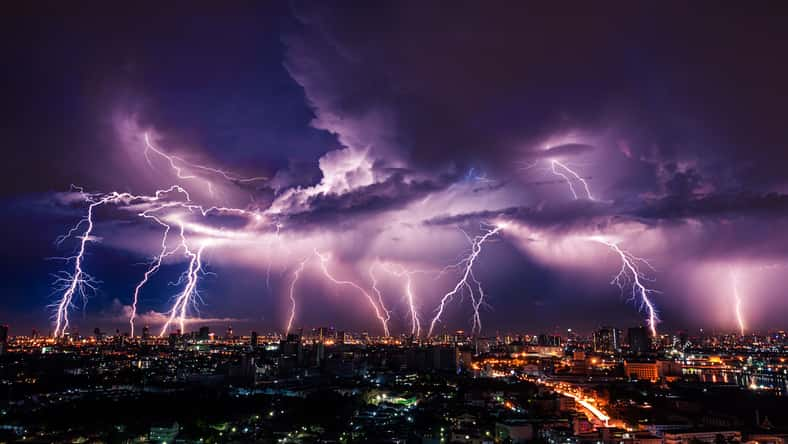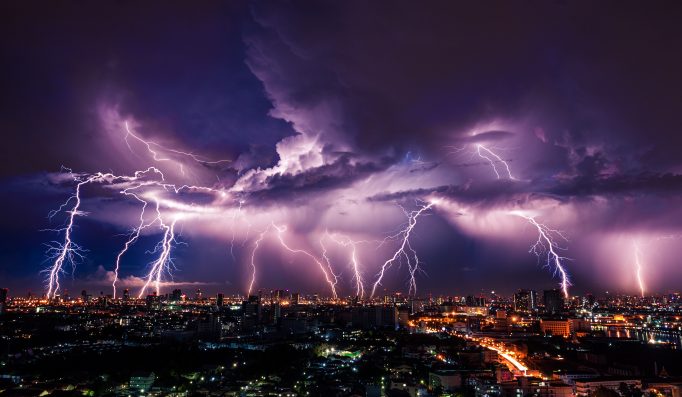Lightning Actually Strikes More Frequently In Skies That Have More Air Pollution

According to a new study, lightning strikes more frequently in skies that have more air pollution—just another unintended consequence of human impact on the environment. Since thunderstorms are more lightning-prone, they are now also more dangerous.
In the United States, lightning kills approximately 20 people each year and injures hundreds more. Some survivors suffer neurological damage for the rest of their lives.
The odds of being struck by lightning have always been relatively low, but now, it seems that they’ve gotten a little higher.
Researchers from James Madison University (JMU) in Virginia analyzed data from a total of about 500,000 thunderstorms across Washington, D.C., and Kansas City over a period of 12 years.
They found that the more aerosols, or fine particles in the air, there are, the higher the number of lightning strikes.
“Pollution acts as cloud nuclei,” said Mace Bentley, a geographer from JMU. “It gets brought into the cloud through the updraft; the updraft and downdraft then separate the pollution particles, which divides the electrical charges in the cloud and leads to more lightning production.”
The research team investigated PM2.5 and PM10, particulate matter up to 2.5 and 10 micrometers, in the environment and compared them to thunderstorm activity.
It appeared that the concentration of the particles had more of an influence on thunderstorm activity than their size.
Generally, more particles mean more lightning. However, having too many particles in the air can reach a point where they actually reduce the amount of lightning, which may be due to a loss of energy inside the storm.

stnazkul – stock.adobe.com – illustrative purposes only
Several other factors, such as air currents and land cover, can also play a role in lightning frequency. In both cities that were studied, the associations with lightning and air pollution were about the same.
“It looks like no matter where you go in the world, urban pollution is capable of enhancing thunderstorms and lightning,” Bentley said.
Furthermore, in both locations, thunderstorms were most common on Thursdays. The quietest day for thunderstorms in Washington, D.C., was Monday, while Friday was the quietest day for Kansas City.
Additionally, when there was the most energy in the atmosphere influenced by factors like humidity and temperature, the levels of air pollution had the greatest impact on the number of lightning strikes.
The phenomenon provides a clearer understanding of how shifts in air pollution might continue to alter meteorological patterns.
Moving forward, the researchers want to examine this relationship in other parts of the world. Currently, they are looking into storms over Bangkok and getting similar results. This suggests the phenomenon occurs globally.
“The environments will be analyzed for differences between urban initiated thunderstorms versus those across the greater region to evaluate the impacts of pollution,” wrote the authors.
The study was published in the journal Atmospheric Research.
Sign up for Chip Chick’s newsletter and get stories like this delivered to your inbox.
More About:News





